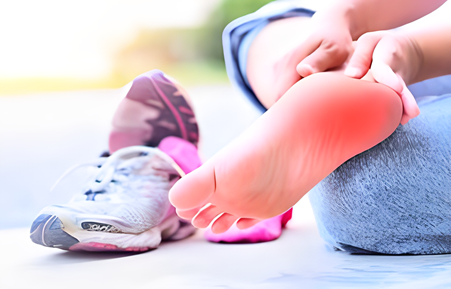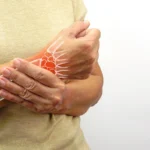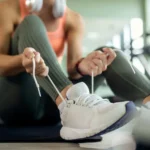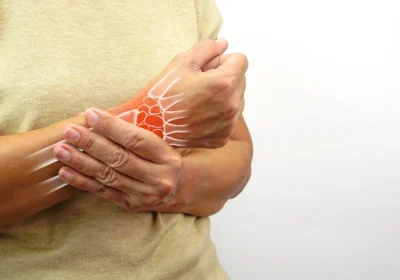
A guide to heel pain-causes, prevention, and treatment
Heel pain can be a debilitating condition that affects individuals of all ages and lifestyles. Whether you’re an avid runner, spend long hours on your feet at work, or simply enjoy a leisurely stroll, heel aches can disrupt your daily activities. In this guide, we will explore the various causes of heel pain, effective heel pain relief strategies, and evidence-based treatments to help you find comfort and relief.
Looking for the best heel pain treatment in this day and age? Visit a good hospital in Indore to avail yourself of the best heel care and pain mitigation procedures there are.
Understanding Heel Pain:
Heel ache is a common complaint, and its causes can range from overuse injuries to underlying medical conditions. The most prevalent culprit is plantar fasciitis, an inflammation of the thick band of tissue that runs across the bottom of your foot and connects your heel bone to your toes. Other causes include Achilles tendonitis, heel spurs, stress fractures, and bursitis.
Causes of Heel Pain:
Plantar Fasciitis:
Plantar fasciitis is the leading cause of heel aches, affecting millions of individuals worldwide. It commonly occurs due to repetitive strain on the plantar fascia, leading to microtears and inflammation. Risk factors include excessive running or standing, improper footwear, obesity, and tight calf muscles.
Achilles Tendonitis:
To put it simply, the Achilles tendon is responsible for attaching the calf muscles to the heels of the bone. Overuse or sudden increases in physical activity can cause inflammation of this tendon, resulting in heel pain. This condition is often seen in athletes and individuals who engage in activities with repetitive jumping or running. Heel pain relief in this case would depend heavily on the modifications of daily activities and lifestyle on a regular basis.
Heel Spurs:
Our heel bones are subjected to bony growths on their undersides, and it is these growths that are referred to as heel spurs. While they are often painless, they can cause discomfort when they press against the surrounding tissues. They are commonly associated with conditions like plantar fasciitis.
Stress Fractures:
Repetitive exposure to strain and heavy physical impact on the heels may result in stress fractures. In the heel, stress fractures can occur due to activities that involve repeated impact, such as running on hard surfaces.
Bursitis:
Bursae are fluid-filled sacs that are mostly tasked with the cushioning and lubrication of joints. In the heel, bursitis can occur when these sacs become inflamed, leading to pain and swelling. This can result from excessive pressure or repetitive stress on the heel.
Prevention of Heel Pain:
Proper Footwear:
Choosing the right footwear is crucial for heel pain treatment. Opt for shoes with good arch support, cushioning, and a proper fit. Avoid high heels for extended periods, as they can contribute to strain on the plantar fascia.
Gradual Increase in Physical Activity:
Whether you’re starting a new exercise routine or increasing the intensity of your current activities, a gradual approach can help prevent overuse injuries. Sudden spikes in physical activity can contribute to conditions like plantar fasciitis and Achilles tendonitis. Gradually increase the amount of exercise on a consistent basis, thereby helping massively with heel pain relief during the process as well.
Stretching Exercises:
Incorporating regular stretching exercises can improve the flexibility of the calf muscles and the plantar fascia, reducing the risk of heel pain. Focus on exercises that target the Achilles tendon and the bottom of the foot.
Weight Management:
Maintaining a healthy weight is essential in reducing stress on the feet and lower extremities. Excess weight can contribute to conditions like plantar fasciitis and exacerbate heel aches. To ensure heel pain relief, a reduction and maintenance of optimum body weight can go a long way.
Treatment Options for Heel Pain:
Rest and Ice:
Rest is a key component of healing for many heel ache conditions. Additionally, applying ice to the affected area can help reduce inflammation and alleviate pain. Use a cold compress for 15-20 minutes several times a day.
Physical Therapy:
Physical therapy can play a significant role in heel pain relief. A skilled therapist can guide you through exercises to improve strength, flexibility, and biomechanics, addressing the root causes of your pain.
Orthotics:
Custom or over-the-counter orthotic inserts can provide additional support and alignment for the feet. These devices can help distribute pressure more evenly and alleviate strain on the plantar fascia.
Medications:
Nonsteroidal anti-inflammatory drugs (NSAIDs), such as ibuprofen, can help manage pain and reduce inflammation associated with heel pain. However, it’s essential to consult with a healthcare professional before long-term use.
Corticosteroid Injections:
In some cases, healthcare providers may recommend corticosteroid injections to alleviate severe pain and inflammation. These injections can provide temporary relief, but their use should be carefully monitored due to potential side effects.
Shockwave Therapy:
Shockwave therapy is a non-invasive treatment option that uses sound waves to stimulate healing in the affected tissues. This therapy has shown promising results when it comes to effective heel pain treatment and mitigation, particularly in cases of plantar fasciitis.
Conclusion:
Heel pain can significantly impact one’s quality of life, but with proper understanding, preventive measures, and evidence-based treatments, relief is within reach. If you are experiencing persistent heel aches, it is crucial to consult with a healthcare professional for an accurate diagnosis and tailored treatment plan. By addressing the root causes and incorporating preventive strategies, you can take proactive steps towards maintaining healthy and pain-free feet.
Intense heel aches holding you back? Visit a good super-speciality hospital in Indore today to diagnose and remedy it.


















